Search for articles, topics or more
browse by topics

Search for articles, topics or more

Once a “wild west“ frontier for experimental urbanism, including vacant lot pop-up paradise gardens and squats, East Berlin is now well-established and integrated into the new global Berlin – it stands as a testament to German reunification.
The new building adds a significant architectural gesture to the area, helping to cement the perception of journalism, digital media and tech-based commerce as central to the identity of the multivalent German capital.
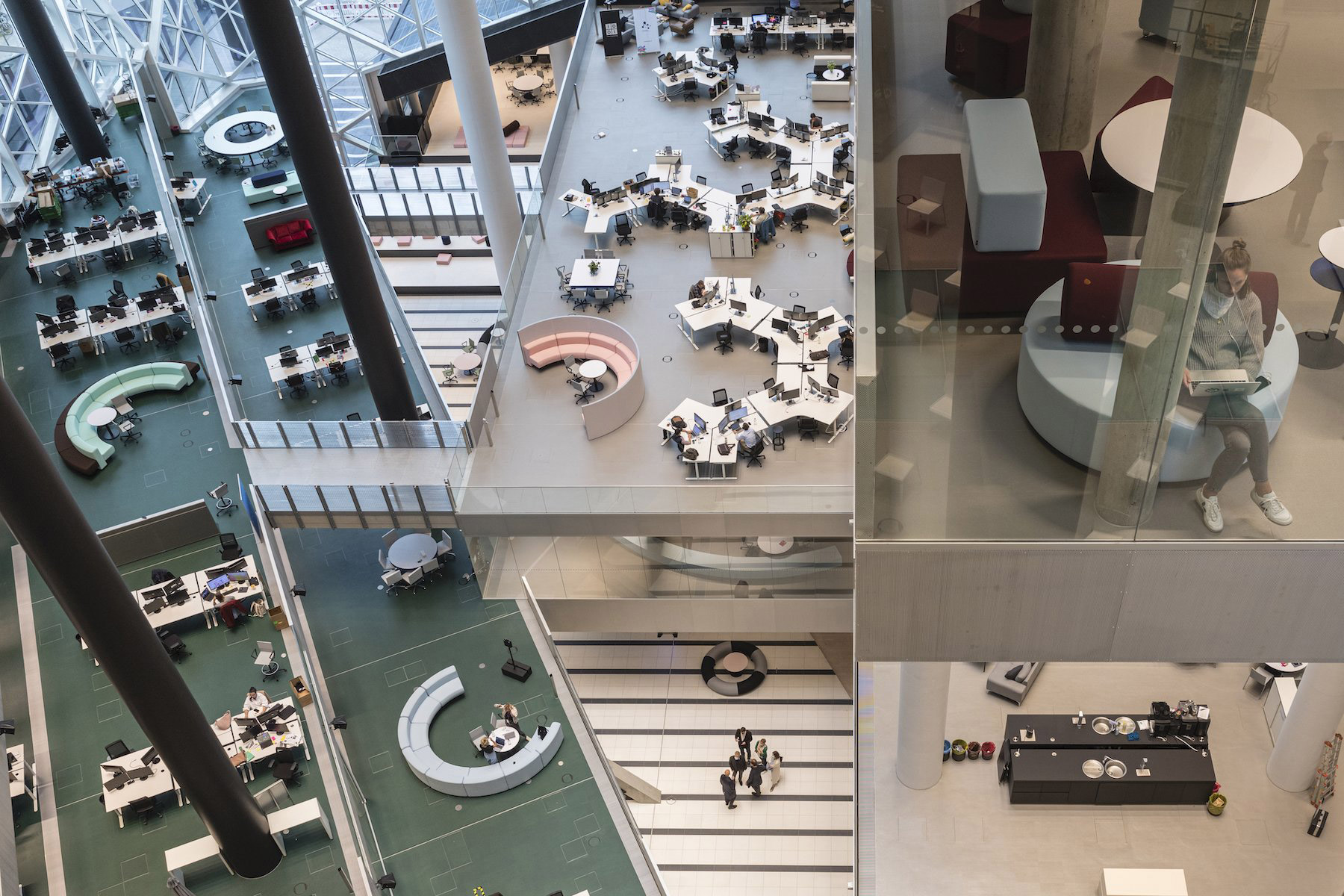
To find out more, Molteni&C Magazine caught up with Katrin Betschinger and Philippe Braun, the OMA architects who led the project.
How do you refer to journalism in the design the Axel Springer building?
Katrin Betschinger The core of the Axel Springer Campus building is its terraced atrium workspace, or the “Digital Valley”, which connects both the interior and exterior. In contrast to a traditional journalism office on enclosed building floors, the monumental windows on each end of the atrium showcase the work of individuals. On the 6th floor, a bridge crossing the atrium hosts the print and digital newsrooms, [making this work] accessible to the public who can directly experience the core of journalistic production.
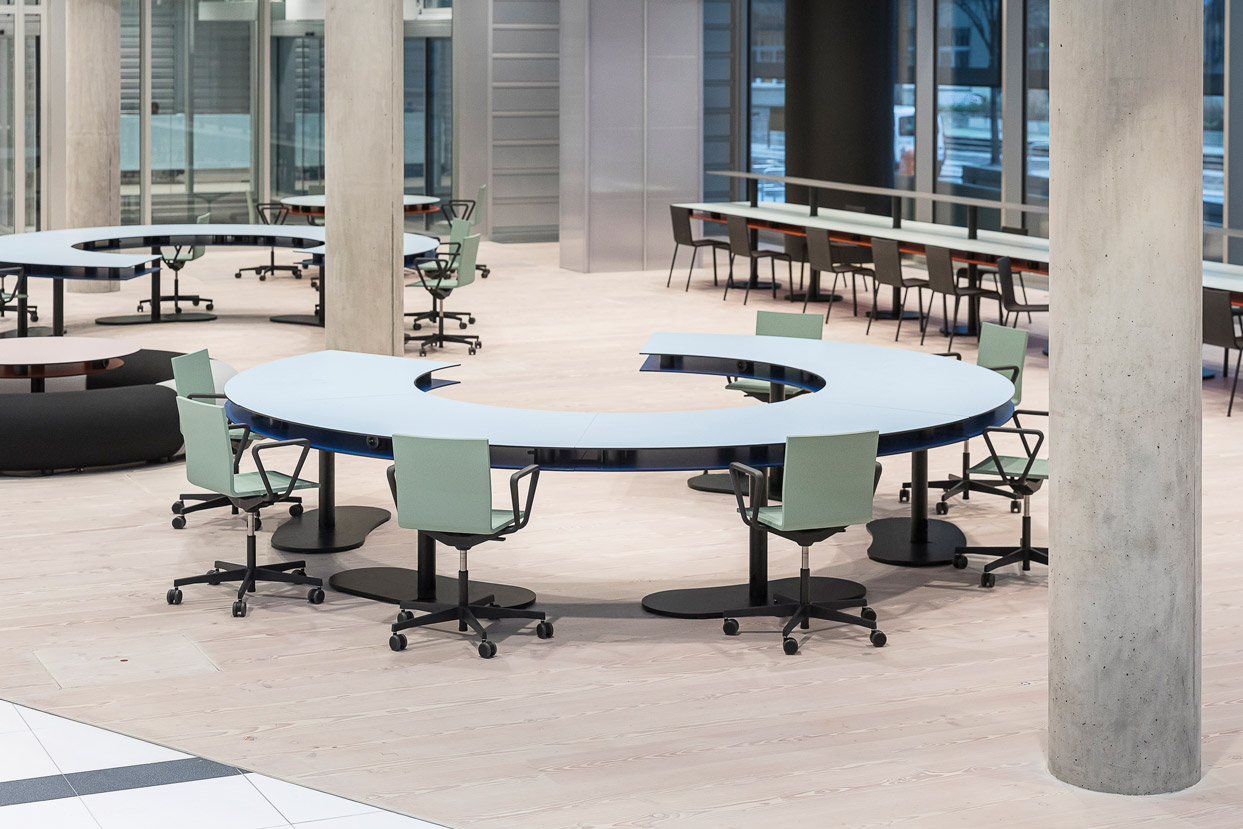
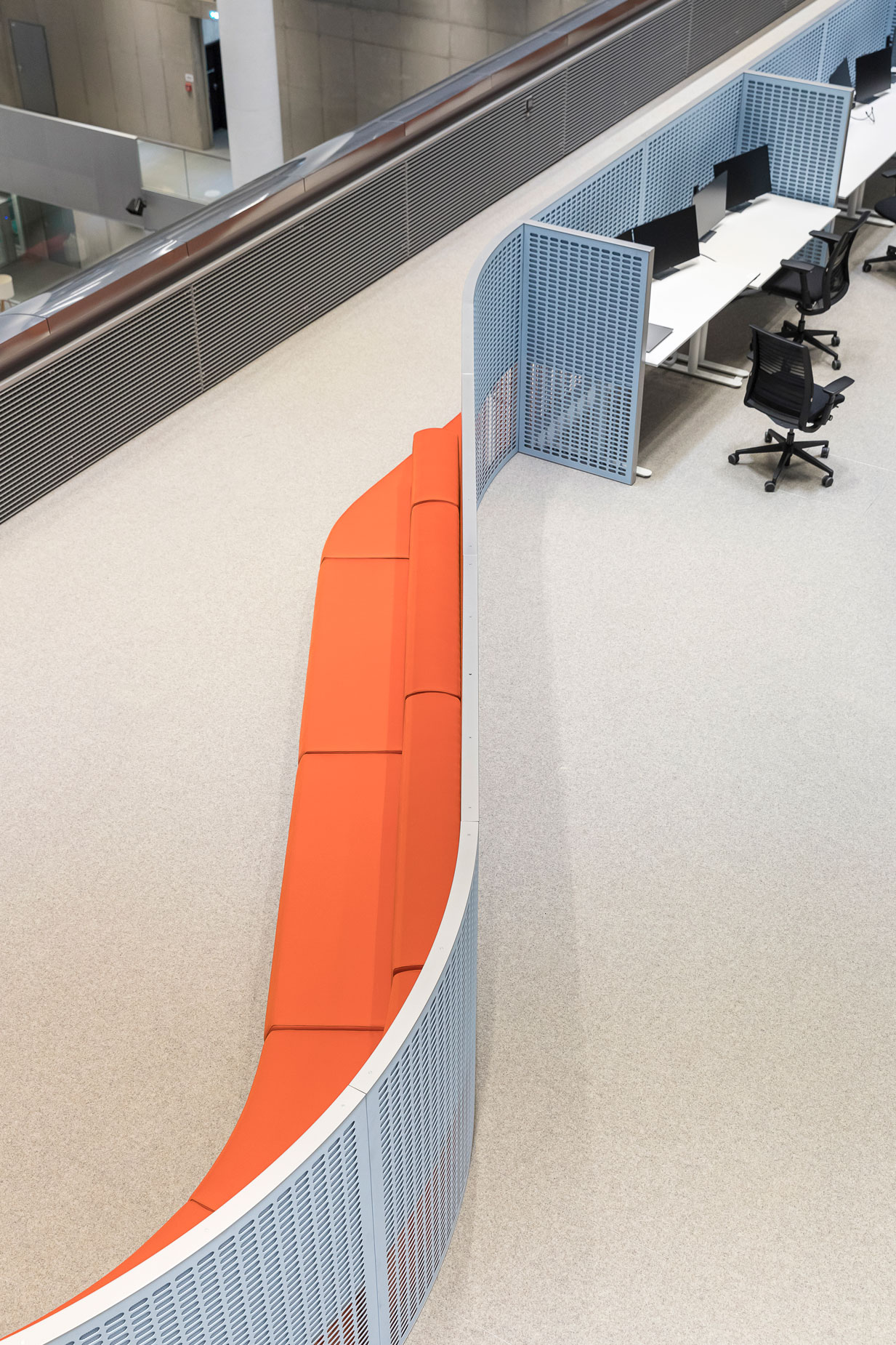
What does that mean in terms of program?
Philippe Braun When Axel Springer SE launched the competition for this project, the publishing house was undergoing a rapid shift from traditional print publications to a broad spectrum of digital media, so adaptability and hybrid media were integral to the design from day one. New media has a fundamentally different reach and pace compared to daily newspapers and periodicals, but both digital and print journalism need a space for collaboration and generating ideas. Therefore we designed a workplace that would continually evolve.
The "Digital Valley" in the centre of the building is clearly meant to encourage interaction.
Can you give us more insight into how the design encourages exchange apart from this large-scale gesture?
PB The interaction is also facilitated by the furnishings OMA designed in collaboration with UniFor. The workstations and furniture elements were tailor-made to requests from the building’s end-users. UniFor manufactured a set of prototypes to be used for a month, and then incorporated the users’ feedback into the final design. The result is playful and versatile: most tables have double-layered surfaces so any location can be used for work, eating, or organisation; incorporated acoustic materials assure a comfortable soundscape anywhere in the atrium; and the pieces’ range of shapes and sizes allow for various working configurations.
KB What the furniture fosters on the small scale is further reinforced by a wide variety of spaces and programs inserted throughout the building – from the publicly accessible food and beverage outlets and co-working spaces on the ground floor to the event hall in the centre of the atrium, the collective staff kitchens and the outdoor working, sports and relaxation areas and vegetable gardens on the rooftop.
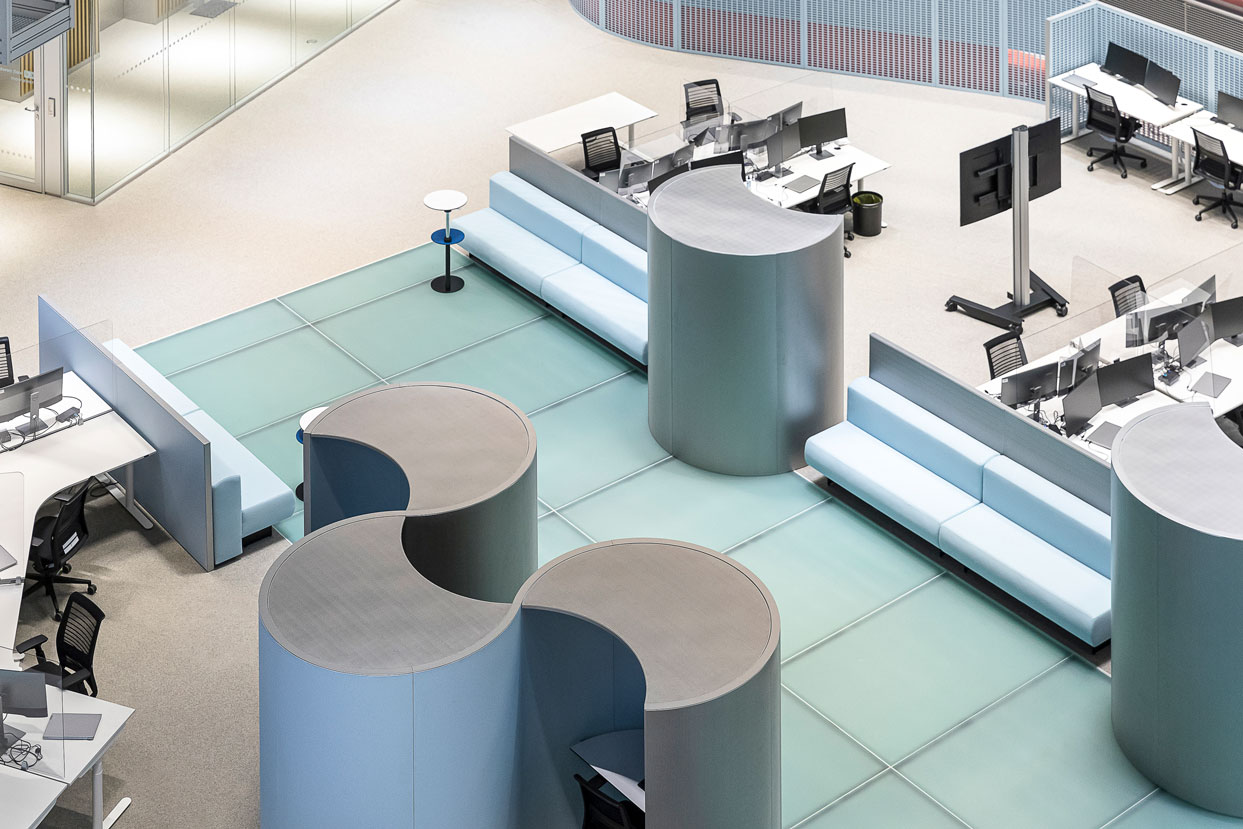
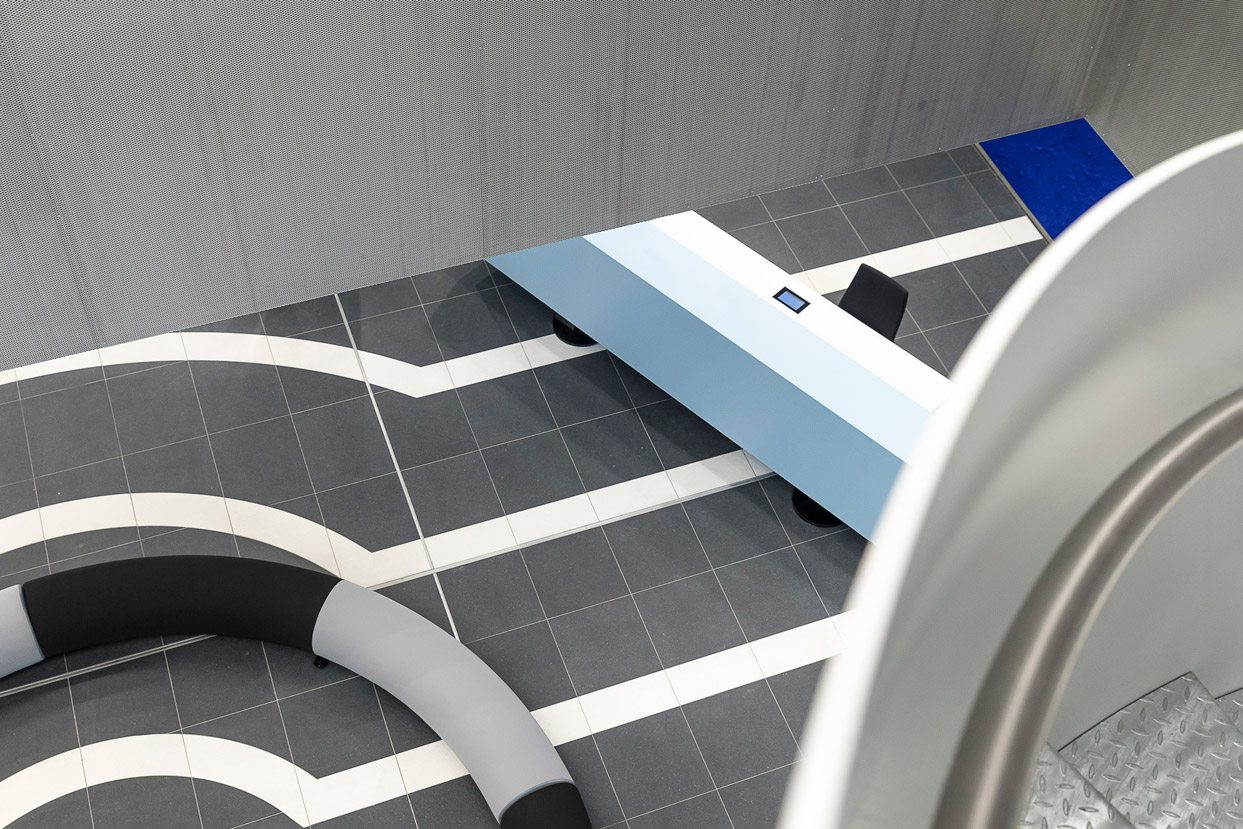
How does the design respond to the Silicon Valley "cool office" style, which is also popular in Berlin?
KB We looked for inspiration in the way tech companies organize their workspace since they are built around innovation, collaboration, and creativity. In Silicon Valley and beyond, these offices became known for their “fun” areas, but too often these “cool offices” are used purely as a branding tool. To OMA, it was important that we inject a good dose of seriousness – which is closer to the spirit of journalism and the German work context.
How is the building meant to attract talent? What statement does it make in the city and internationally?
KB Axel Springer’s new building acts both as a symbol and a tool – a building to draw the elite of digital Bohemia from Germany and abroad. Despite opening during the pandemic, the building has done well to provide a functional working environment in as much as work was allowed in the office by the Covid-19 restrictions. The adaptable configurations of the common working areas proved to be a significant asset for many of Axel Springer’s digital-native publications.
How does the building respond to its historic position in East Berlin?
KB The old Axel Springer headquarters was built in the West as a testimony to democratic journalism during the city’s division. The new campus is its modern reply. It sits on a site that was formerly East Germany and no-man’s land. The orientation of the atrium follows the former Wall’s path and looks out towards former West Germany, down the Zimmerstraße and Checkpoint Charlie, only a few blocks away.
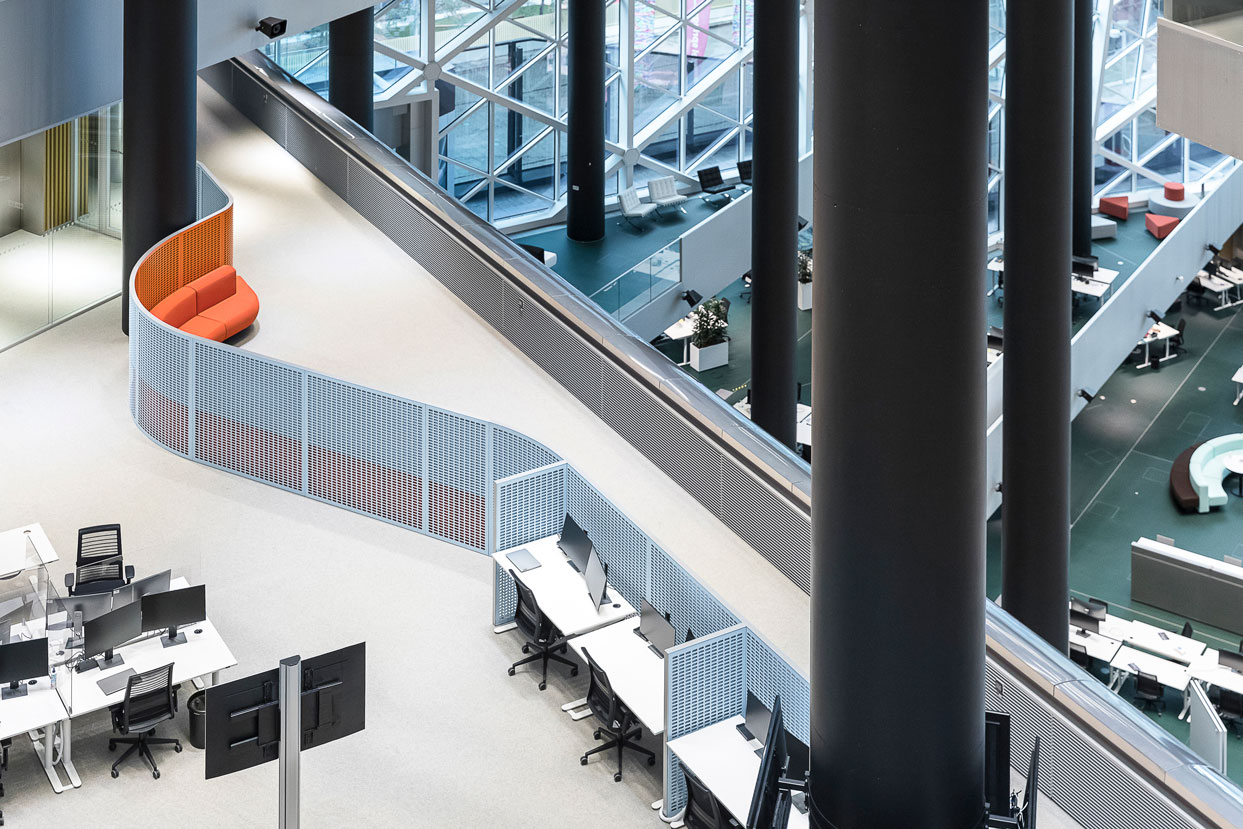
At La Valltorta gorge in Valencia, Spain, there are figures of humans and animals that were painted onto the rock face by our prehistoric ancestors many thousands of years ago.
Herzog & de Meuron for UniFor in Milan
The designers looking to Ancient Rome for modern relevance
Thanks for your registration.